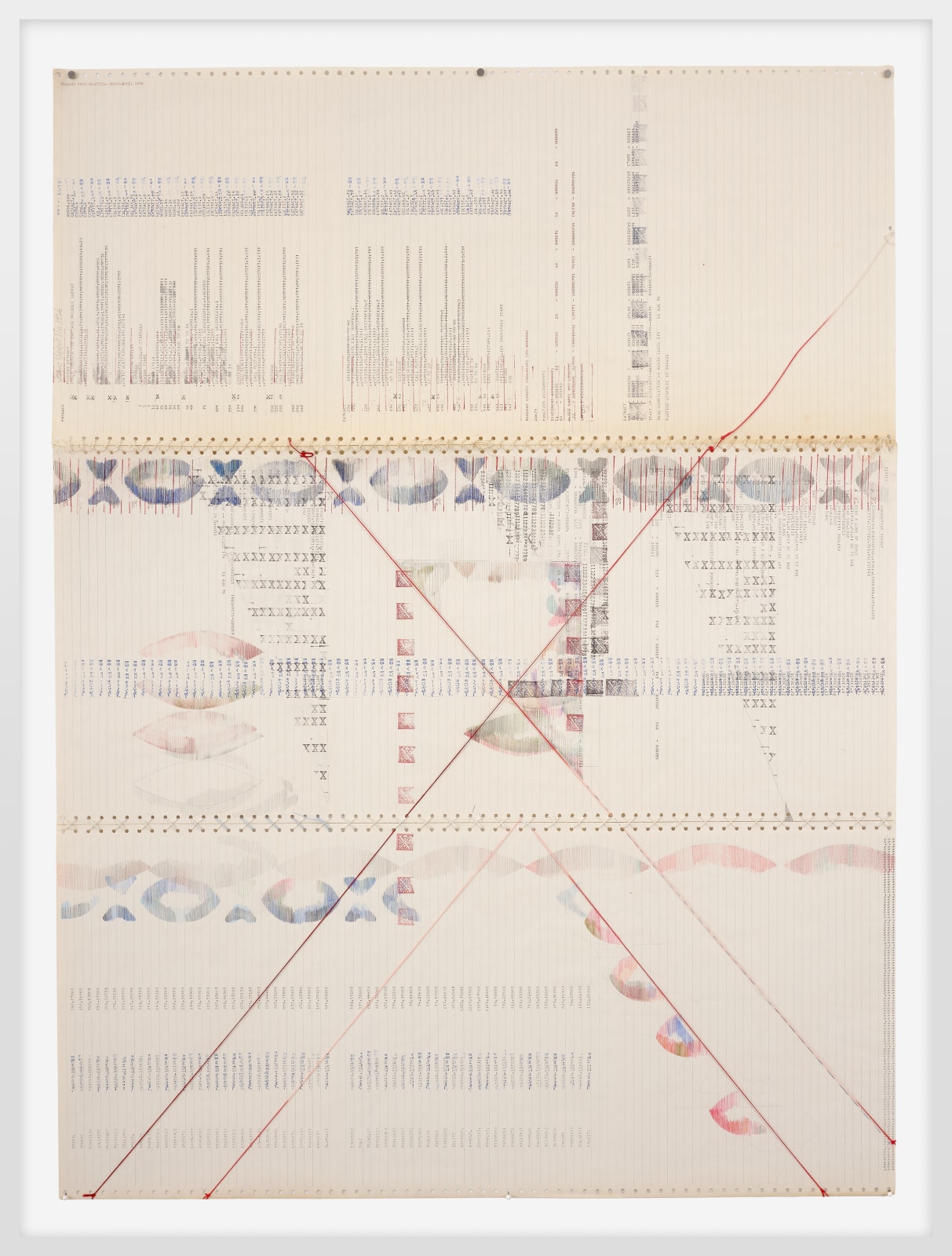Frieze New York 2020: Sonya Rapoport
Frieze New York Viewing Room
Spotlight, SP9
Casemore Kirkeby presents a selection of paintings and works on paper by the late Bay Area artist Sonya Rapoport (1923-2015, Berkeley, CA). Focusing on a pivotal moment (1973-1979) in Rapoport’s six- decade career, our Spotlight booth at Frieze presents large scale works that have rarely been seen outside of Northern California. Rapoport’s large scale acrylic airbrush paintings on canvas make use of imagery, including graphs and survey charts, that reflects her early interest in data and computer science. They feature a coded language of stencils that represent gendered symbols; a fetus, a uterus, an “udder.” On view will be several of Rapoport’s works on paper and large scale Yarn Drawings (1976), the first of many works she created on salvaged, mainframe computer printout paper. These multi-panel drawings are delicately rendered with colored pencil and ink stamps, and stitched together like a patchwork quilt with rainbow yarn. Together, Rapoport’s work from the 1970’s is a unique instance of a female artist from the West Coast addressing rapid technological and social change. Her work seems uncannily relevant today, as our society continues to be transformed by technology.
Sonya Rapoport (1923-2015) was an American artist with a pioneering conceptual, feminist art practice spanning six-decades. Rapoport was among the first women to receive an MA in Painting at UC Berkeley in 1949. She was active in a community of artists experimenting with technology and psychology, taking a leadership role in the new media journal Leonardo (MIT Press). Rapoport’s opulently colored, enigmatically structured paintings from the early 1970’s feature a coded language of stencils representing the female body. Later in the decade, Rapoport made a remarkable shift to embracing information technology. In the era of room-sized computers programmed with punch cards, the purview of big business and scientific research, Rapoport began experimenting with continuous-feed computer paper. Drawn to the then-futuristic aesthetic of sprocket holes, grid lines, and cryptic inscriptions, Rapoport drew into existing patterns with graphite, colored pencil, and ink stamps, and stitched constructions together with colorful yarn. She later programmed computers to create dense visual representations of information about her daily life, including her shoe collection, the objects on her dresser, and her family. Her legacy includes paintings, drawings, interactive computer installations, and web art. Her work has been featured in Documenta 8 (1987), Whitney Biennial (2016), and has been collected by MoMA New York, The Getty Research Institute, The Victoria & Albert Museum, SFMOMA, Berkeley Art Museum, and the San Jose Museum of Art.










